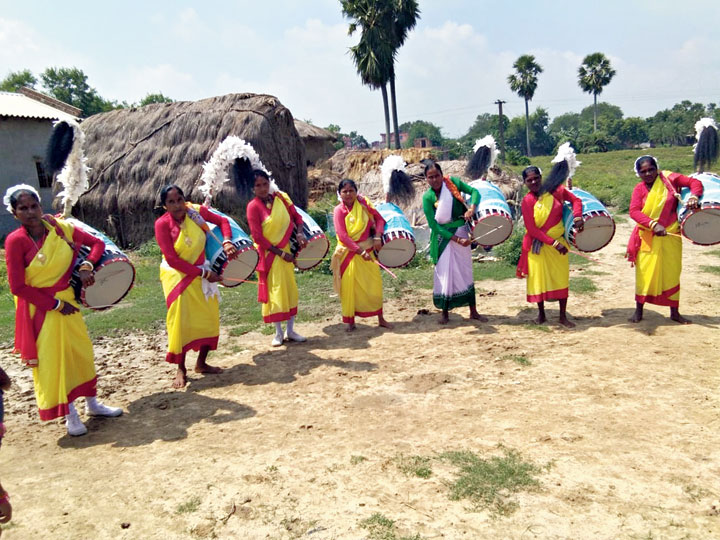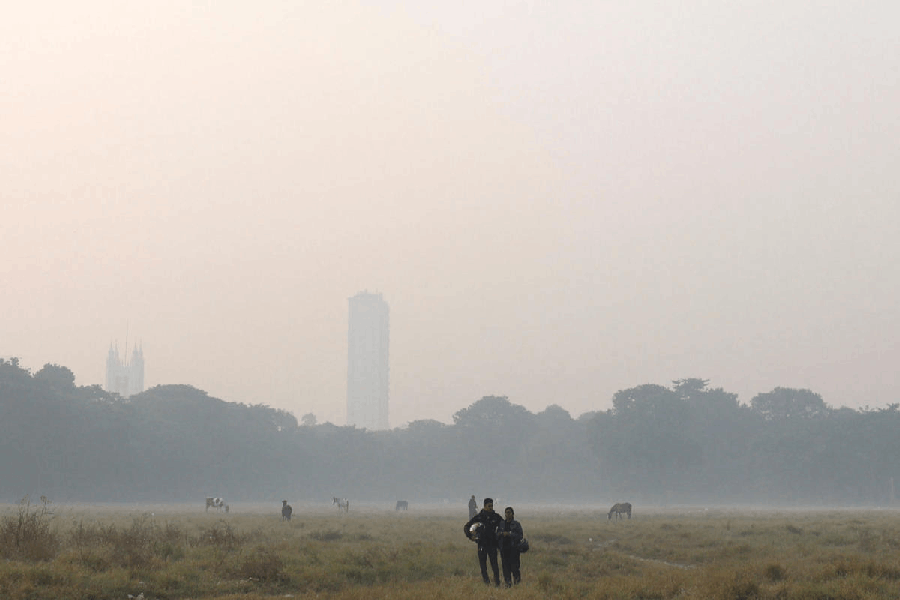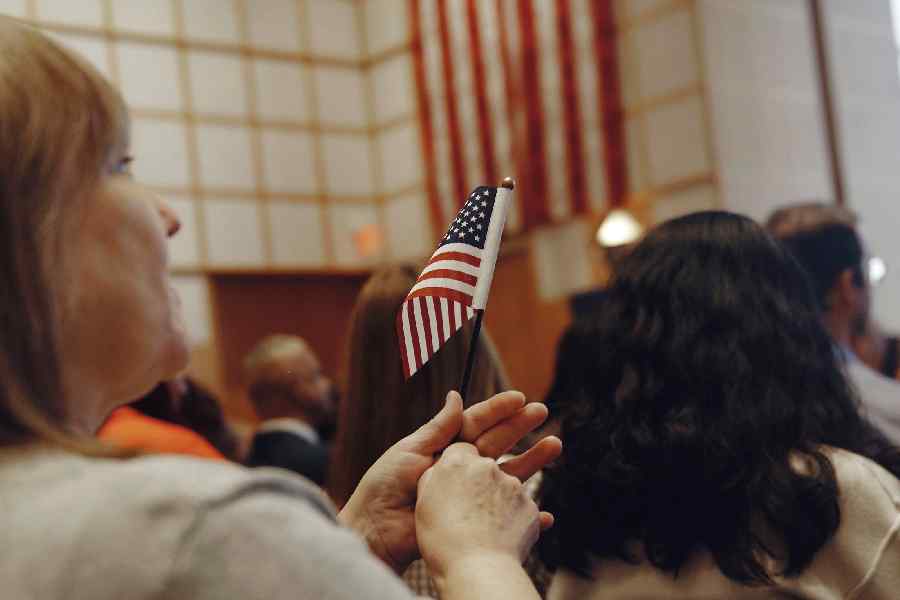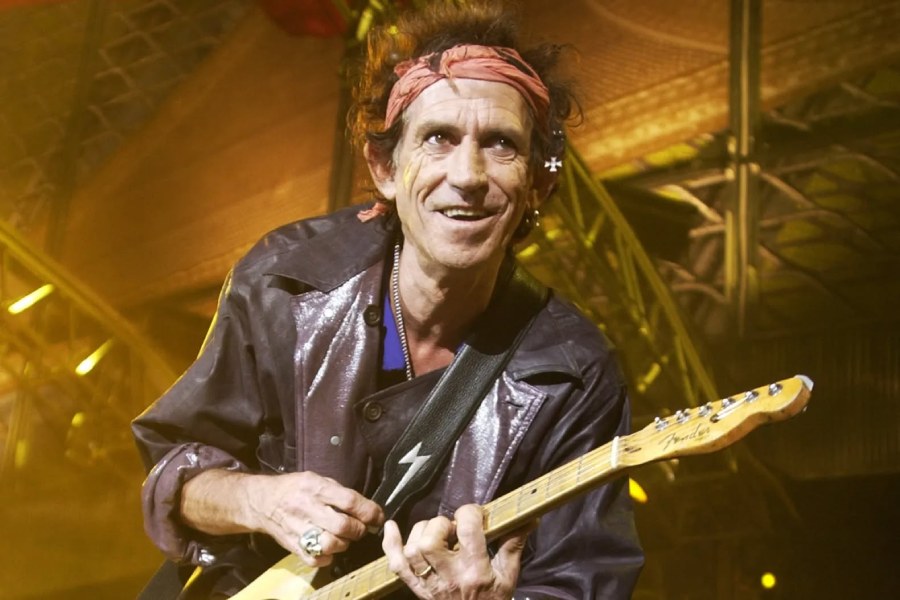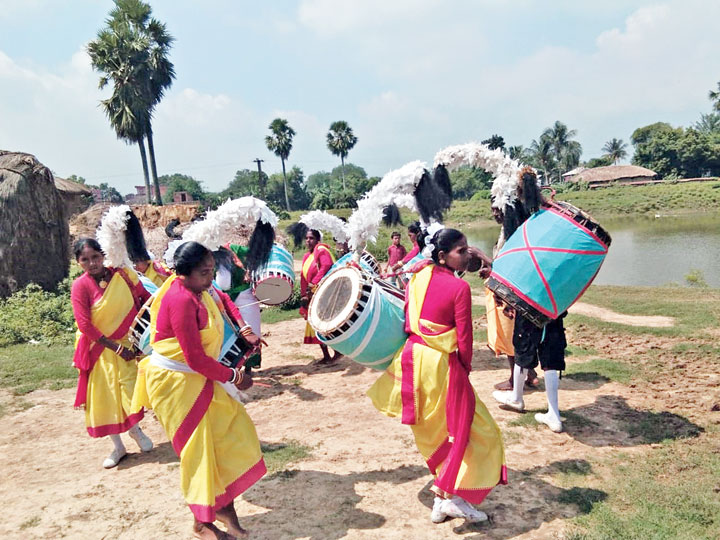
The women dhakis of East Burdwan Anirban Hazra
Eight middle-aged women from Manteswar in East Burdwan who came to know each other 10 months ago during distress in their personal lives such as poverty and widowhood joined forces to pull themselves out of their socio-economic despair by the time Puja arrived.
Their meeting, which culminated in the Maa Annapurna Mahila Dhak Group, will see the women eke out handsome earnings over the next four days of the festival and earn the distinction of being the first “women dhakis” from the area.
Nabani Das, 45, is one of the organisers of the group. The homemaker, who takes care of her ailing husband, said they came up with the idea looking at the large number of men dhakis who flock from Burdwan district to Calcutta during Puja.
“We wondered if we could do the same thing. We have always been used to seeing men earn a decent living during the festive season as dhakis,” said Nabani.
Dhakis have traditionally been men who provide much of the backdrop to the rituals that span Puja.
The members of Maa Annapurna Mahila Dhak group hail from Baghasan, a remote East Burdwan village of 600 people, roughly 120km from Calcutta, with low rates of literacy. The village had gained local renown in past years for the large number of migrant dhakis.
“This is not a very fertile area, so people became dhakis in the past and worked as part-time farm labourers for much of the year. But now, the youth have lost interest totally. Most of them migrate for good,” Nabani said.
Earlier this year, Das and the other members pooled funds and purchased two dhaks. Knowing they would face hurdles in becoming professionals, they broached their idea in June to senior dhakis in the village with hopes of being tutored.
“But only one of them, Sudeb Das, listened to us and agreed to help,” said 50-year-old Rinku Das, a widow and another member of the group.
Three months on, their self-help efforts — as well as the desire to carve a niche for women in a male-dominated art form — have paid off. Starting Saturday, the Maa Annapurna Mahila Dhak group will play at two pandals in the district.
“Two committees have hired us for Rs 20,000 each to play for four days at their pujas in Guskara and Burdwan. We will divide ourselves equally among the two,” said Nabani.
Sudeb Das, the group’s mentor, said he was “overwhelmed” when the women approached him for lessons. “These women approached me at a time youths have lost interest in the dhaki’s profession. Their gesture was overwhelming to me. I was only too glad to agree,” said Sudeb, who is a third-generation dhaki.
“Not only will becoming dhakis help the women financially, it will also help the profession,” he added.
According to some estimates, dhakis can earn upwards of Rs 1 lakh a year. Besides Puja, they are also sought at other events such as weddings and carnivals.
“Dhakis are hired for several programmes other than Puja. For example, on the Red Road immersion procession. Their income, however, is highest during the four days of Puja,” said Fatik Badyakar, a dhaki from Burdwan who is continuing the family tradition.

